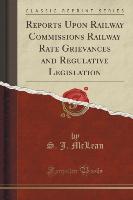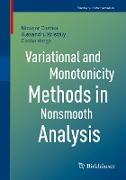- Start
- Reports Upon Railway Commissions Railway Rate Grievances and Regulative Legislation (Classic Reprint)
Reports Upon Railway Commissions Railway Rate Grievances and Regulative Legislation (Classic Reprint)
Angebote / Angebote:
Excerpt from Reports Upon Railway Commissions Railway Rate Grievances and Regulative Legislation
The earlier point of view was that the railroad was under the domination of competitive forces. It was thought that there would be effective competition of different individuals on the roadbed of the railway company, thereby guaranteeing the public interests. The absolute necessity of unified control was not appreciated. The general point of view was that competition would exist on the railway as it did on the canal system. Even when it was seen that this method of control was not effective, the belief in competition was by no means given up. It was hoped that by means of competing lines the regulation of rates would be obtained.
The crucial point in all discussions concerning railway regulations is the rate question. The extreme individualist point of view is that railway rates should be allowed to adjust themselves through the exercise of competitive forces in the same way as the prices of commodities in general. The parallelism between the merchant and the railroad company is inexact. Between merchants there is more effective competition than between railroads. The large amount of capital demanded by railroad construction, added to the question of situation, makes the railroad an economic monopoly. The prices charged under such conditions will be on a monopoly, not on a competitive basis. The presence of different roads to some extent offsets this, but even here the competition is less effective than in ordinary business. There cannot be the same free play of supply and demand. The opportunities for choice between carriers by the shipper are much more limited than are the opportunities for choice by the buyer in ordinary business. The demand is relatively more urgent the supply in proportion to the demand is less.
It may be urged that the effective way to control rates is through the establishing of competing lines. To a certain extent this is effective. But the limitations must be borne in mind. The competition is not of the same nature as in ordinary business. In railroading it is often the weaker road which forces upon the stronger road ruinous competition. The weaker road, when in a bankrupt condition, has nothing to lose and everything to gain by slashing rates. The restraining influence of solvency is not present, in fairness to railroads which are solvent, regulation of rates through such competition should not be relied upon. Such competition is not for the best interests of the public, through the fluctuations in rates it renders business fluctuating. Again, such competition cannot be relied upon as a constant regulator. The stronger road may be forced, in self-defence, to obtain control of the weaker and bankrupt competitor. Such was the case in regard to the relation between the New York Central and the West Shore. Even were the competing lines equally solvent the dependence upon continuing effective competition is futile. Each road occupies a quasi-monopolistic position. Although competition may exist for a time, yet in the long run the roads will find it more convenient to enter into agreements, formal or informal. The rate wars are not permanent. Recent experience in Canada in connection with the relations between the Grand Trunk and the Canadian Pacific are in point in this connection. The evidence presented to the English Select Committee on railways in 1882 showed that there was no effective competition between roads. They had found it in their interest to enter into agreements (Rept. Evidence Qns. 2, 964 & 3, 896.)
The argument is often made that the railroad's interests are the interests of the people it serves and therefore the road may always be looked to to adopt the policy which is best for all. Theoretically this essential identity of interest does exist, in practice some limitation must be made. A railway may consider it a
Folgt in ca. 5 Arbeitstagen




